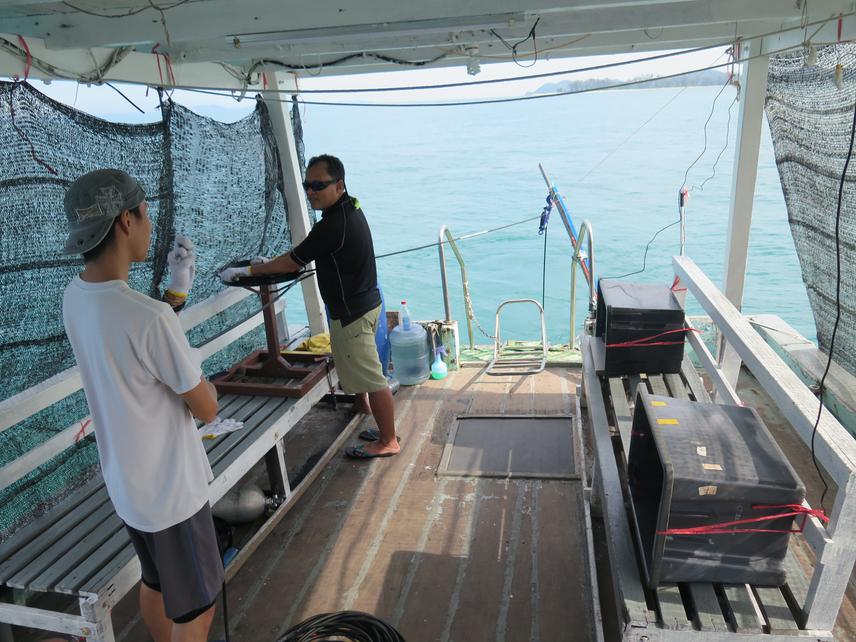Harris Wei-Khang Heng
Other projects
26 May 2020
Incorporating Drone Technology in Determining Population Size and Important Habitats of Dugongs in the Sibu-Tinggi Archipelago, Johor, Malaysia
The dugong is a marine herbivore that is listed as an endangered species in Malaysia, and whose limited distribution and survival are highly dependent on the availability of healthy acreages of seagrass meadows. The Sibu-Tinggi Archipelago, off Johor east coast appear to host the only viable but small population of dugongs (Dugong dugon) in Peninsular Malaysia, owing to the presence of verdant seagrass meadows in the area. There remains a lack of detailed research on the main dugong seagrass habitats in the area, which limits our understanding of the dugong’s ecology. This in turn hinders the proper understanding of the species’ local conservation needs, which subsequently hinders the development of suitable conservation and management plans.
This project proposes to comprehensively study the distribution of seagrass meadows and the endangered dugong’s interaction with their seagrass habitat in the subtidal tropical environment of the Johor east coast archipelago. The project’s objectives are to (1) identify the extent of seagrass meadows in the study site, (2) ascertain the diversity of species and biomass of seagrass consumed by dugongs, (3) identify main areas of dugong grazing, (4) determine the nutrient composition values of seagrasses consumed, and (5) determine the time-area usage patterns of those feeding grounds.
It is envisioned that through the detailed study of the dugong’s habitat, appropriate and informed place-based conservation plans can be drafted for the areas critical to the dugongs as well as tailored to the local conservation needs of the species (rather than just an arbitrary 2 nautical mile radius as per existing Marine Park criteria).

Part of the survey team at their respective positions for the seagrass survey – positioning the underwater camera, monitoring and recording the underwater seagrass
Researching the dugong’s seagrass habitat and its use of it is one aspect of the knowledge gap in which this project aims to fill. Specifically, the project’s questions are:
(1) What are the boundaries of the seagrass meadows in the study area?,
(2) Where are the areas where dugongs constantly feeding?
(3) What are the factors (i.e. biomass) that drive the selection of the dugong’s feeding locations in a constantly available subtidal environment (as opposed to an intertidal environment where seagrasses are exposed and unavailable to dugongs during certain parts of the day)?
(4) Are dugongs’ diet preferences based on the nutrient quality of the seagrass?
(5) Are there any seasonal changes on dugong herbivory levels in relation to the grazing grounds (i.e., do these grounds shift in the subtidal environment) and what are the dugongs’ movement patterns into and out of the main grazing grounds?.
Since 2005, there were some intensive efforts which have been done by researchers from University of Malaya, particularly in observation of presence of dugongs and seagrass surveys in the Johor waters. Those data were later on enhanced by an NGO known as MareCet, in collecting comprehensive aerial survey and acoustic data on the dugongs’ distribution around that archipelago. Nonetheless, to date there remains a gap in our knowledge base on the dugong-habitat ecology in the area, one that is crucial in enhancing our understanding of their local conservation needs. This project therefore provides a great opportunity for the expansion of knowledge on the critical yet often overlooked seagrass habitat of an endangered population of dugongs, and provides vital information that will assist in the development of boundaries for conservation areas that are to be gazetted within the Dugong Sanctuary project that has been sanctioned by the government and also to be used in the development of implementation and management measures for seagrass for the Dugong Sanctuary. This research will also help raise the profile of seagrass that are highly important in the marine environment but often overlooked.